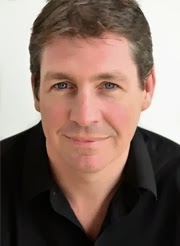









Today, Tracy and I went our separate ways – I went off on an overnight visit to Beijing and The Great Wall, whilst she stayed in Tianjin for the day, before heading off on a 4 day/3 night adventure around Beijing, then off to Xi'an to see the Terracotta Warriors, and then re-joining the ship again once we'd got to Shanghai.
It's not often you get off a cruise ship to see snow on the ground, and it was a bitterly cold day, with a biting gale blowing in from the north. For no apparent reason, we were kept waiting for almost two hours by the officious Chinese immigration before we were allowed to leave the ship – don't they want people to come to their country? The trip from Tianjin to Beijing by coach took almost three hours, and so we went straight to lunch – our first of many round table feasts with countless dishes served up on an overloaded "lazy Susan".
Then we put as many as layers as possible on (I had 7 layers on), to brave the freezing wind, for an exhilarating visit to the vast Forbidden City. Everything in the Forbidden City is on a huge scale – a series of opulent pavilions and brightly painted palaces, one after the other, separated by enormous courtyards (the one in front of the Temple of Supreme Harmony could accommodate up to 100,000 people for an intimate Imperial audience). The good thing about the size of the Forbidden City is that, even though there's an enormous number of visitors there, it never gets overwhelmed by tourist numbers, and there's always a quiet corner to get away from the tourist hordes.
When you see the size and extravagance of the Forbidden City, it gives you an understanding of the sheer power of China as a country – once it had given up wasting its plentiful resources and manpower on Imperial Palaces, Civil Wars, and Cultural Revolutions, then it was always going to become one of the world's economic super-powers.
From the Forbidden City, we then moved onto the equally monumental and over-whelming Tiananmen Square, the largest public square in the world. The square is fronted by the huge Tiananmen Gate at one end, (this statement of imperial power incongruously sporting a large picture of "the Great Helmsman" himself, Chairman Mao), and surrounded on the other three sides, by the bombastic Communist architectural set-pieces of Mao's China – the Great Hall of the People, the Monument to the People's Heroes, and Mao's Mausoleum. Just in case anyone was thinking of launching any pro-democracy protests, there were plenty of unsmiling policemen and camera-shy soldiers everywhere, supported by the largest number of CCTV cameras that I've ever seen in one place. Political freedom has lagged along way behind economic freedom in post-Mao China.
After soaking up the Tiananmen Square atmosphere, we went to our palatial hotel, the Ritz Carlton, for a warm bath and a bit of luxury, before heading to a famous restaurant for Beijing's signature dish, Peking Duck. Some passengers seemed disappointed that Peking Duck in Beijing, tastes just like the Peking Duck at home, but it was delicious nonetheless – which couldn't be said for the Chinese red wine they served us, which would have stripped paint off a garden fence.
On our drives to and from the hotel, we got a chance to see Beijing's phenomenal modernisation that's taken place over the past decade. Fantastical modern architecture dazzled us from our coach windows (including the amazing Bird's Nest), while gleaming shopping malls, selling the latest luxury western fashions, made it hard to believe that this country still called itself a Communist one.
The scale of Beijing is almost overwhelming, but it's a fantastic place to visit.






















































